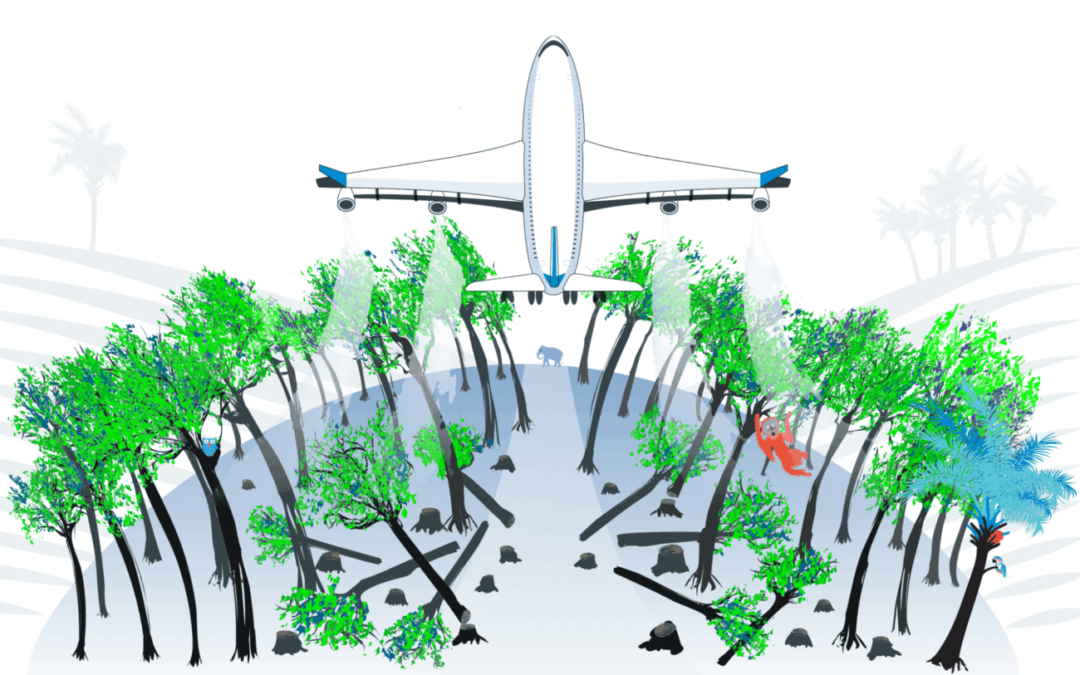SOURCE: Rainforest Foundation Norway
DATE: October 1, 2019
SNIP: As the general assembly meeting of the International Civil Aviation Organization (ICAO) got underway in Montreal, Rainforest Foundation Norway’s new report ‘Destination deforestation‘ goes into the heated debate about “flight shame” and the role of the aviation sector in contributing to the climate crisis.
The report reviews the status of the targets the aviation industry has set for alternative fuels and shows how high the risk is that expanding biofuel use in aviation will cause the last thing the world wants or needs right now: increased deforestation.
The aviation industry has set an aspirational goal to reduce its CO2 emissions by 50 percent in 2050 (compared to 2005), without limiting growth. Central to this vision is a near complete shift from conventional jet fuel to alternative aviation fuels. Near total replacement of fossil fuel would be needed to meet this target.
A number of technologies are available to produce aviation biofuels, or even to produce aviation fuels from electricity, but the only one of these technologies currently operating at a commercial scale is the ‘HEFA’ (Hydroprocessed esters and fatty acids) process to produce jet fuel from vegetable oils and animal fats.
The cheapest and most readily available feedstocks for HEFA jet fuel are palm oil and soy oil, which are closely linked to tropical deforestation. Unless alternative aviation fuel policies actively support more sustainable options, it is likely that meeting the aviation industry’s aspirations to reduce emissions would lead to a sharp increase in demand for soy and palm oils.
The report estimates that meeting the aspirational targets outlined by ICAO through the cheapest and most readily available technology would lead to an additional demand in 2030 of 35 million tons of palm oil, 3.5 million tons of palm oil by-products (PFAD), and 35 million tons of soy oil. For comparison, the current global annual production of palm oil globally is around 70 million tons.
The report concludes that this increased demand for palm oil and soy could drive 3.2 million hectares of tropical forest loss (an area larger than the size of Belgium) and 5 gigatons of land use change CO2 emissions (close to the current annual greenhouse gas emissions of the USA) in 2030, unless measures are taken to avoid the targets being met using the most readily available aviation biofuel technology and feedstocks.

